
Comic books today are a revered and often fanatically collected medium, but that wasn't always the case. In fact, almost from the beginning, the popular four-color magazines gave parents, teachers, and church leaders fits.
The most common lament: Comic books put dangerous ideas in children's heads and turned them away from more respectable forms of literature. By the mid-1950s, the outcry had become so vociferous that the industry created its own self-censoring body, the Comics Magazine Association of America, and with it a lengthy list of what comic books could and could not contain, known as the Comics Code Authority (CCA).
Writers were hobbled by the restrictions of the CCAit even banned the words horror and terror-so their stories became trite, repetitious, and boring. The situation changed dramatically in the early 1970s when the CCA finally loosened its chokehold, freeing comics to tackle the issues of the day, including drug addiction, racial disparity, political corruption, and poverty.
In the decades that followed, comic books experienced a remarkable transformation. Superheroes still dominated sales, but talented writers such as Alan Moore, Neil Gaiman, Brian K. Vaughan, Ed Brubaker, Garth Ennis, Brian Azzarello, Alison Bechdel, Colleen Doran, and many others eagerly took comic books to an exciting new level in terms of story and storytelling.
This story is from the July - August 2023 edition of Writer’s Digest.
Start your 7-day Magzter GOLD free trial to access thousands of curated premium stories, and 9,000+ magazines and newspapers.
Already a subscriber ? Sign In
This story is from the July - August 2023 edition of Writer’s Digest.
Start your 7-day Magzter GOLD free trial to access thousands of curated premium stories, and 9,000+ magazines and newspapers.
Already a subscriber? Sign In

Writing for a Warming World - Imagining the overwhelming, the ubiquitous, the world-shattering.
Climate change is one of those topics that can throw novelists—and everyone else—into a fearful and cowering silence. When the earth is losing its familiar shapes and consolations, changing drastically and in unpredictable ways beneath our feet, how can we summon our creative resources to engage in the imaginative world-building required to write a novel that takes on these threats in compelling ways? And how to avoid writing fiction that addresses irreversible climate change without letting our prose get too preachy, overly prescriptive, saturated with despair?

Kids' Author Meg Medina Inspires Readers
WD chats with the National Ambassador of Young People’s Literature.
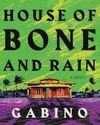
The Horrors of Grief
Whether hot off the presses or on the shelves for years, a good book is worth talking about.
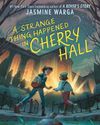
The Mystery of Growing Up
New York Times-bestselling author Jasmine Warga tackles a new genre with her signature blend of empathy for her readers, agency for her characters, and the belief that art is the great connector.

Education
Even if it's not your thing, you're probably familiar with the term dark academia.

A Do-Over Romance
Karin Patton, the first-place winner of the 24th Annual Writer's Digest Short Short Story Awards, shares a funny story about secondchance love and a brief Q&A.
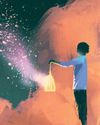
Everyday Wonder
How to mine awe from the mundane

From Ordinary to Extraordinary
Unveil the hidden beauty in the facts and transform your nonfiction with the power of wonder.
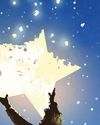
Childhood: Our Touchstone for Wonder
How to get in touch with Little You and create big new work for today.
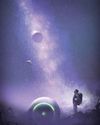
Agent Roundup
22 agents share details, about what kind of writing will pique their interest and offer tips for querying writers...